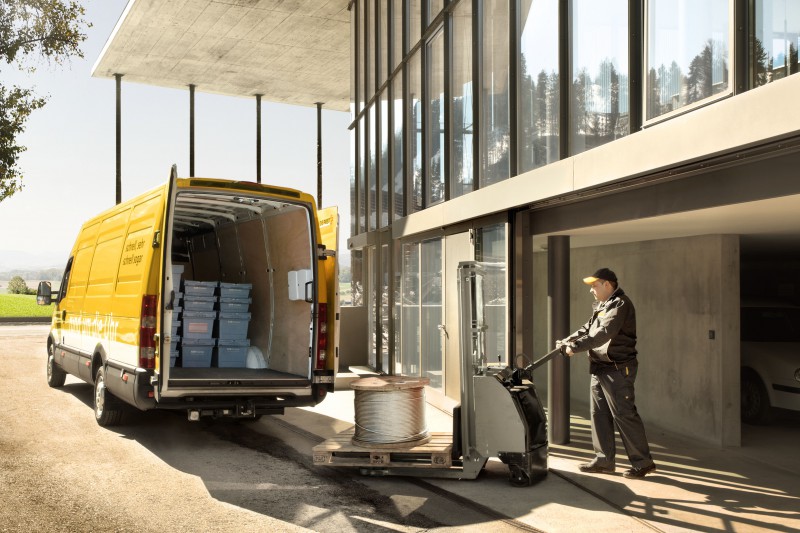

In future, an increasing number of electronic devices will be linked with each other and to the Internet. The so-called Internet of Things also offers a range of new applications in the field of logistics. This is why Swiss Post is aiming to set up a network based on LoRaWAN (Long Range Wide Area Network) technology and test various areas of application. Initial testing will begin at the end of March.
Unprecedented business opportunities are arising from the ongoing miniaturization of sensors and their cost-effective operation
LoRaWAN is an open low-power radio standard initiated only a few months ago by reputable companies such as Cisco and IBM. Swiss Post is exploring the potential of setting up its own nationwide LoRa network in order to support its logistics and implement customer-friendly services. With its numerous physical access points as well as logistics and office locations, Swiss Post is well placed to exploit this opportunity. This would enable Swiss Post to create an infrastructure for the “Internet of Things” in Switzerland in the near future. Swiss Post is planning to go live with its first test network between Berne and Biel at the end of March.
This technology makes it possible to connect a diverse range of objects and devices (vehicles, parcels, letter boxes, etc.) to the Internet at very low cost and with minimal energy consumption. This would enable Swiss Post to offer its customers innovative and intelligent services. Unprecedented business opportunities are arising from the ongoing miniaturization of sensors and their cost-effective operation.
LoRaWAN is an open low-power radio standard initiated only a few months ago by reputable companies such as Cisco and IBM
An intelligent sensor connected to the Internet via LoRaWAN, for example, can trigger an automatic order placement every time stocks on a shelf run low. This would allow Swiss Post to replenish the supplies of its logistics customers as and when needed and when there is sufficient space in the customer’s warehouse.
Sensitive consignments can be equipped with sensors which trigger an alarm as soon as a consignment is opened by an unauthorized party or the maximum temperature for a medicinal product is exceeded. An additional GPS sensor could also provide the exact location in which a consignment was opened. This would permit the safe transport of valuable or sensitive consignments, and if need be, their tracking.
Small transmitter units, so-called smart buttons, could be used in order to trigger a specific service on demand: for instance, to notify the mail carrier in an area in which home delivery service is available. These small devices require no configuration and are therefore easy to use; orders can be triggered at a simple push of a button.
LoRa antennas have a reach of 5 to 15 kilometres, depending on the topography. As the sensors and buttons send actual signals to the network only sporadically or on demand, the battery charging cycle has a service life of up to 5 years. The devices are roughly the size of a 5 francs coin and are expected to become even smaller over time. LoRa technology does not require a SIM card or a mains connection. This also makes it suitable for use in remote or mobile applications.
Acelerando la industria IoT, se crea la Open Connectivity Foundation
Manutención y Almacenaje
Más de 50 años impulsando el sector. 360º alrededor de la cadena de valor logística